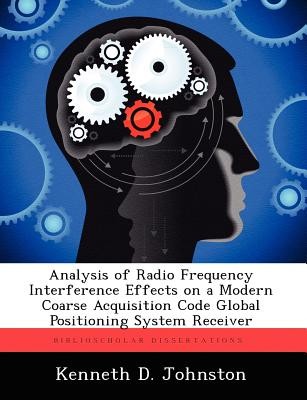
- We will send in 10–14 business days.
- Author: Kenneth D Johnston
- Publisher: BiblioScholar
- ISBN-10: 1249578418
- ISBN-13: 9781249578413
- Format: 18.9 x 24.6 x 0.7 cm, softcover
- Language: English
- SAVE -10% with code: EXTRA
Analysis of Radio Frequency Interference Effects on a Modern Coarse Acquisition Code Global Positioning System Receiver (e-book) (used book) | bookbook.eu
Reviews
Description
The purpose of this thesis was to investigate the performance of a twelve channel Standard Positioning Service (SPS) based Global Positioning System (GPS) receiver using an eight state Kalman filter in a hostile radio frequency (RF) environment and to develop instructional tools for teaching RF interference on GPS receivers. The two types of jamming signals generated included Continuous Wave (CW) and Swept CW. Actual GPS and jamming signals were used in the research. The signals received from GPS satellites exhibit a Doppler shift which vary between approximately six Kilohertz. The Doppler shift frequency can be reasonably predicted for a given time of day, for a given satellite, and for a known receiver location using GPS satellite almanac or ephemeris data. Additionally, the Pseudorandom Noise (PRN) Coarse Acquisition (C/A) code for each satellite exhibits specific maximum amplitude spectral lines. By tailoring the jamming signals to match with the Doppler shifted satellite frequencies and offsetting the jamming to a maximum spectral line, it was shown that individual Navstar XR5-M receiver channels for specific satellites could be selectively jammed/spoofed. Swept CW jamming resulted in pulling the XR5-M receiver tracking channels off frequency by up to 20 Kilohertz but resulted in a maximum position error of only 220 meters. The CW jamming of at least one of the XR5-M receiver channels resulted in position errors in the receiver in excess of 12 kilometers.
EXTRA 10 % discount with code: EXTRA
The promotion ends in 18d.05:51:16
The discount code is valid when purchasing from 10 €. Discounts do not stack.
- Author: Kenneth D Johnston
- Publisher: BiblioScholar
- ISBN-10: 1249578418
- ISBN-13: 9781249578413
- Format: 18.9 x 24.6 x 0.7 cm, softcover
- Language: English English
The purpose of this thesis was to investigate the performance of a twelve channel Standard Positioning Service (SPS) based Global Positioning System (GPS) receiver using an eight state Kalman filter in a hostile radio frequency (RF) environment and to develop instructional tools for teaching RF interference on GPS receivers. The two types of jamming signals generated included Continuous Wave (CW) and Swept CW. Actual GPS and jamming signals were used in the research. The signals received from GPS satellites exhibit a Doppler shift which vary between approximately six Kilohertz. The Doppler shift frequency can be reasonably predicted for a given time of day, for a given satellite, and for a known receiver location using GPS satellite almanac or ephemeris data. Additionally, the Pseudorandom Noise (PRN) Coarse Acquisition (C/A) code for each satellite exhibits specific maximum amplitude spectral lines. By tailoring the jamming signals to match with the Doppler shifted satellite frequencies and offsetting the jamming to a maximum spectral line, it was shown that individual Navstar XR5-M receiver channels for specific satellites could be selectively jammed/spoofed. Swept CW jamming resulted in pulling the XR5-M receiver tracking channels off frequency by up to 20 Kilohertz but resulted in a maximum position error of only 220 meters. The CW jamming of at least one of the XR5-M receiver channels resulted in position errors in the receiver in excess of 12 kilometers.


Reviews